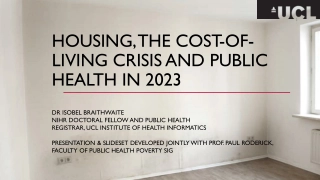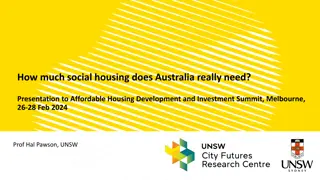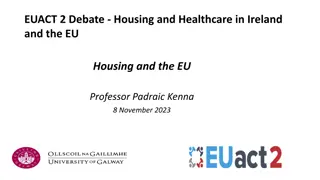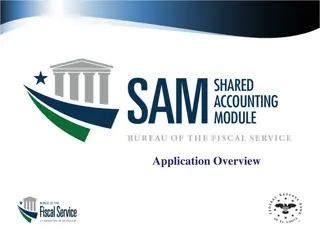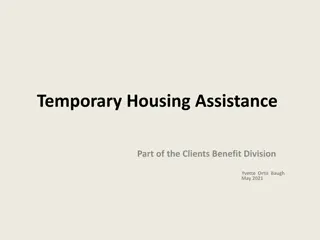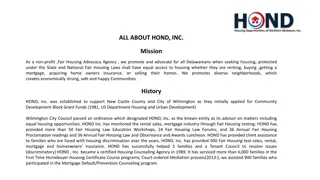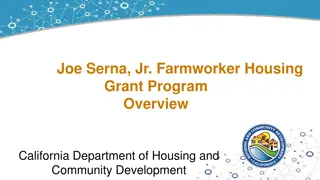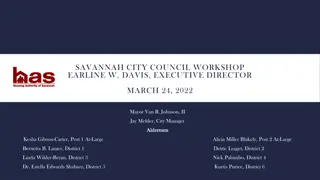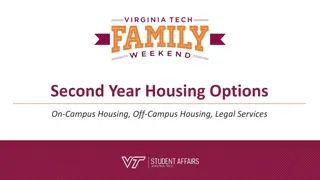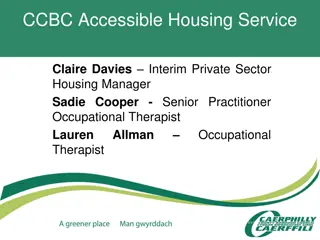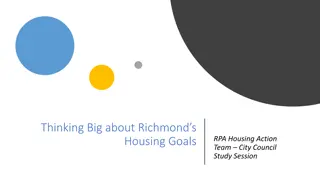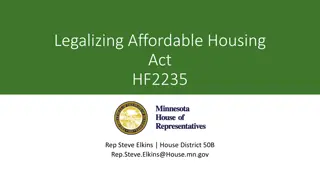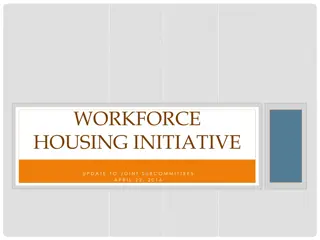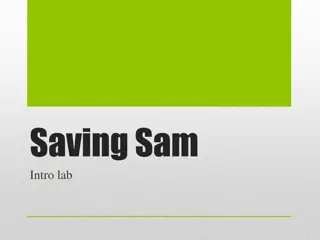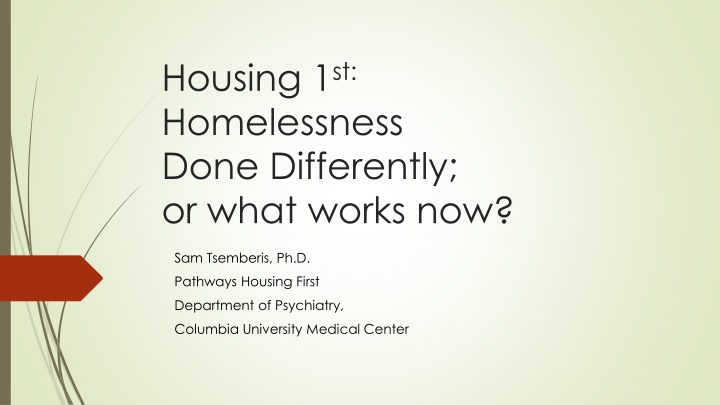
Effective Strategies for Addressing Homelessness: Insights from Sam Tsemberis
Gain valuable insights into addressing homelessness effectively through the work of Dr. Sam Tsemberis at Pathways Housing First Department of Psychiatry, Columbia University Medical Center. Explore the root causes, perspectives on outreach, and ways to best serve individuals experiencing homelessness. Discover innovative approaches and learn how public perception influences policy responses.
Download Presentation

Please find below an Image/Link to download the presentation.
The content on the website is provided AS IS for your information and personal use only. It may not be sold, licensed, or shared on other websites without obtaining consent from the author. If you encounter any issues during the download, it is possible that the publisher has removed the file from their server.
You are allowed to download the files provided on this website for personal or commercial use, subject to the condition that they are used lawfully. All files are the property of their respective owners.
The content on the website is provided AS IS for your information and personal use only. It may not be sold, licensed, or shared on other websites without obtaining consent from the author.
E N D
Presentation Transcript
Housing 1st: Homelessness Done Differently; or what works now? Sam Tsemberis, Ph.D. Pathways Housing First Department of Psychiatry, Columbia University Medical Center
Ending homelessness: Why we haven t; how we can 1. Homelessness is relatively out of sight (and out of mind) 2. Long held biases and bigotries about the poor are less than (unconsciously internalized). Far too many our poor and homeless neighbors are viewed as drunk, lazy, or crazy homeless by choice Public perception determines public policy responses. 3. Program and policy approaches that blame more often than we support people with needs. We seem to prefer judgement and tough love to support and meaningful institutional change. From DiLeo s chapter in Ending Homelessness: Why we haven t, how we can
Root cause 2: Economic, policy and system failures 1. Housing policy: severe cuts in federal investment in affordable housing 2. Economic policy creating greater income disparity: a growing number unable to afford a place to live working for minimum wage 3. Priced out: Individuals on fixed income are priced out of the real estate market 4. Lack of system coordination: foster care, education, mental health, corrections, separate from housing, supported housing and eachother
Who is experiencing homelessness? How best to serve them? Prevention Families and youth have similar patterns 80% transitionally homeless Rapid Rehousing Permanent Supportive Housing 10-15% episodically Housing First 5-10% chronically
2 Perspectives on Outreach Public health/Public safety and Individual Care 1) PUBLIC HEALTH/SAFETY: programs include assertive directed outreach, enforcement of laws targeting the homeless, and other approaches designed to remove/assist individuals who are homeless away from public spaces 2) Individual Care and Support: engage, support, encourage self determination and recovery
Homeless services Staircase (Treatment First) approach Permanent housing Transitional housing independence Shelter Level of 35-45% effective Homeless Treatment compliance + psychiatric stability + abstinence
Emergency Response in the Face of Multiple Presenting Problems 10% of POPULATION USES 50% OF SYSTEM RESOURCES Jails Institutional Circuit Shelters Streets Hospitals/ Detox
Key Factors of Paradigm Shift Program philosophy (recovery) View of people served Treatment practices Power relationships Commitment to ongoing support (intent to treat)
Empowerment (Rapport) Empowerment: is the intervention intended to enhance the degree of control vulnerable individuals exercise over their lives. 1. Self determination freedom is being able to choose your life 2. Collaborative and democratic participation 3. Distributive justice
Pathways Housing First Model PARDIGM SHIFT Permanent supportive housing Transitional housing Immediate Access Ongoing, flexible support Harm Reduction Housing as a Right Emergency Shelter Placement Homeless *Immediate Access to A Place of Your Own Support and treatment to follow
5 Principles of Housing First 1. Consumer choice 2. Separation of housing and services 3. Services array to match needs 4. Recovery focused practice 5. Program operations
HUD-VASH 76,329 homeless veterans
Housing Retention Of the 700 homeless Veterans admitted to HUD-VASH utilizing a Housing First approach, 84% (585) are still living in permanent housing, with varying lengths of stay one year after we started the pilot Among the 115 Veterans who have left the program, 37% (43) moved to a more independent living arrangement; 20% (23) discharged to an institutional setting, including hospital, nursing home, or prison; 30% (34) relapsed into homeless or were lost to care; 13% (15) died, the majority from natural causes. Cost savings inpatient (53%) and outpatient (31%)
Los Angles PIT Count 2015 Chart Title 30000 STREET 20-85% 25000 20000 WOMEN 55% 15000 10000 YOUTH 20% VETERANS -31% 5000 0 Category 1 Category 2 Category 3 Series 1 Series 2 Series 3 Series 4 NATIONALLY 56% REDUCTION IN 3 YEARS
Systems change in housing policy and practice Private market Community landlords Coordinate housing and treatment Accept / share risk for clients (landlord, agency, neighbor) Expand conversation from homelessness to lack of affordable housing
Lessons learned from veterans initiative Operations -targeting, -outreach -Home visits Changing STAFF attitudes Why can t they do it themselves? He s in there using How long do we support before it becomes enabling?
Lessons from HUD-VASH Systemic barriers risk aversive did not go well with harm reduction evidence of use resulted in write up liability issues three calls and you are out Contracts with community agencies (11 in LA)
Housing First in 5 Cities: different sizes and composition across Canada Vancouver Pop: 578, 000 Moncton Pop: 107,000 Montreal Pop: 1,621,000 Winnipeg Pop: 633, 000 Toronto Pop: 2,503,000
HF outcomes for moderate and high need participants Percentage of time housed
Findings from qualitative studies -Overall, being housed greatly preferred to being homeless -Greater overall sense of safety -Improvement in overall quality of life -Other goals are manifest (employment, socialization) reclaiming or building a sense of belonging -Positive sense of self, feeling normal
Qualitative findings continued Having a place of one s own can serve as a platform for other positive and challenging psychological effects; -Privacy and control to establish one s own routine -Lonely, isolated, not fitting in -Housing stability and improved quality of life was retained despite continuing to experience symptoms or struggling with addiction (affirming the HF approach) -Mental health, addiction and discretionary income marginally improved
When Housing First Doesnt Work The 10-20% who have repeatedly tried and failed in the scattered site model Single site options with control of entrance and exit Some recovery house options Other options in managed group setting need to be explored
Pathways Housing First Program Fidelity Assess the extent to which components of the program model are being implemented Structural and operational features: staffing, caseloads, frequency of contact, time to house, service support post housing, etc. Philosophy, values: participant choice? Harm reduction? Empowerment?
Why Fidelity? Housing First is not housing only Housing First is not Housing is the first thing after they Choice is not laissez-faire Assertive engagement is not coercion Peer Specialists are not junior case managers Understand the practice Make ongoing improvements Maximize outcomes
Program Fidelity Is it Housing First? PROGRAM TYPE TRANSITIONAL RRH Choice in the location % Separation of Hsng & Services % Rent subsidy % Lease rights % Affordability (30%) % Immediate access % Living arrangement %
Program Fidelity Is it Housing First? PROGRAM TYPE TRANS/ ITIONAL RRH Harm reduction Y/N Recovery orientation Y/N Motivational interviewing Y/N Trauma informed culture Y/N Match service to needs Y/N Team approach N/Y Case load ratios low N/Y
Housing First Fidelity Adaptation
Key Point Higher fidelity to Housing First is associated with more recovery-oriented practice and improved outcomes.
Redesigning the System: System Transformation Permanent housing (scatter-site, off site services) Permanent Single Site (on-site services) Community-based, Residential Treatment (on-site clinical staff) Longer term Institutional Care >Less restrictive to more restrictive >
Keys to effective dissemination (Damschroder et al., 2009). 1. Leadership/political will/local champion 2. Inner setting (host program, culture , values, operations) 3. Outer setting (community funding support) 4. Intervention clearly understood, evidence base technical assistance provided to help with adaption 5. Process: clear plan with targets and accountablity
POLITICAL WILL We know how to end homelessness Let s not wait any longer to end it!
Thank You For Your Attention Questions? Comments?

